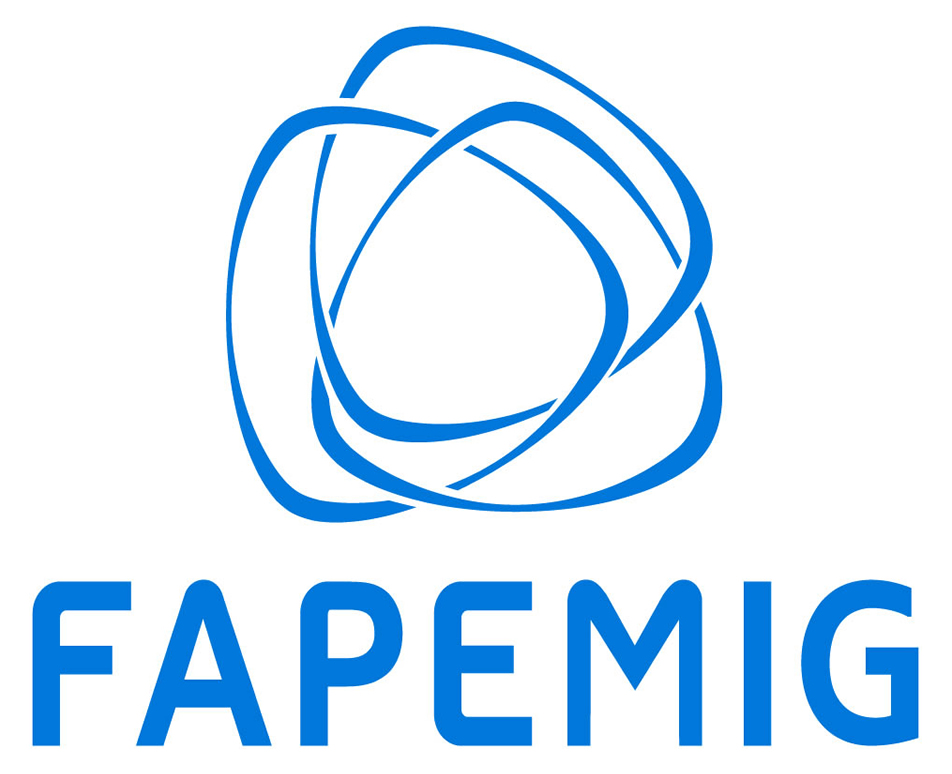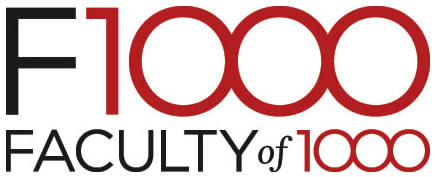Posters
| Category 'D'- Comparative Genomics' |
| Poster - D01 |
| Genome constellation analysis of group A Rotavirus circutating in Brazil |
| Débora Barreto, Federal University of Sergipe, Brazil |
| Débora Barreto, Federal University of Sergipe, Brazil Marcus Batista, Federal University of Sergipe, Brazil |
| Short Abstract: The genotype classification of Rotaviruses was based on VP4 and VP7 proteins.A novel and more robust genotyping system has been proposed based on the whole genome,the genome constellation.Evaluate the genome constellation of group A Rotavirus isolates from Brazil in order to identify the genetic identity. |
| Poster - D02 |
| Structured regions of non-coding RNAs in the genome of a Tunicate: Didemnum vexillum |
| Cristian Arley Velandia Huerto, National University of Colombia, Colombia |
| Cristian Velandia Huerto National University of Colombia, Colombia Clara Isabel Bermúdez Santana, National University of Colombia, Colombia Federico David Brown Almeida, The University of São Paulo, Brazil |
| Short Abstract: Recently, the availability of genomic information from model organisms for evolutionary developmental biology studies have been increasing, such as the case of the colonial tunicate Didemnum vexillum, that represent an organism that have an invasive marine lifestyle. In their genomic and evolutionary context, Tunicates represent the sister group of Vertebrates and have remarkable genome organization and evolutionary patterns. With this evidence, we have been interested in the genome organization of the non-coding RNAs regions, that are characterized by their patterns of conservation in the secondary structure level in this genome. Through the analysis on the D. vexillum genome, we estimated both: a genome size about to 542.32 Mb distributed through 882185 fragments, and a GC content around 35.96%. Through the application of 8 different homology BLAST strategies we found homology regions with parameters of identity greater than 75%, compared with correspondent query sequences from a set of 11 different evolutionary related organisms dispersed along Metazoa. That searches revealing that the most homology hits comes from miRNA family. On the other way, the results of a Hidden Profile Markov Models (HMMs) strategy, suggest that about 80% of the obtained hits with this strategy, belongs to tRNAs, U6, miR-598 and Small Ribosomal Subunits. The validation of those candidates was achieved with structural alignments, applying different families of Covariance Models (CMs), obtaining possible non-redundant regions that correspond to a particular family of non-coding RNAs (ncRNAs). For each CM we measure quality parameters to recognize the better strategy searching the different families of ncRNAs. |
| Poster - D03 |
| Wheat Transcriptome Analysis Targeting Leaf Rust Resistance-Related Genes |
| Paula Kuser-Falcao, Embrapa Informática Agropecuária, Brazil |
| Alice Casassola Universidade de Passo Fundo, Brazil Sandra Brammer, Embrapa Trigo, Brazil Márcia Chaves, Embrapa Trigo, Brazil Antonio Nhani, Embrapa Trigo, Brazil José Martinelli, Universidade Federal do Rio Grande do Sul, Brazil Paula Kuser-Falcao, Embrapa Informática Agropecuária, Brazil Adhemar Zerlotini, Embrapa Informática Agropecuária, Brazil Lesley Boyd, National Institute of Agricultural Botany, Francesca Stefanato, National Institute of Agricultural Botany, |
| Short Abstract: Leaf rust is an important disease affecting wheat production in Brazil. Plant pathogen fungicide resistance demands discovery of new disease management control strategies, and improved genetic breeding is one such effective approach. This work presents Toropi-specific sequences that could represent new resistance candidate genes to be used in wheat breeding. |
Long Abstract: Click Here |
| Poster - D04 |
| Convergent evolution of Arabidopsis thaliana FtsH5 and its negative regulator FIP (FtsH5 interacting protein) |
| Marcos Araújo Castro e Silva, MSc student at Escola Superior de Agricultura Luiz de Queiroz (University of São Paulo), Brazil |
| Marcos Silva MSc student at Escola Superior de Agricultura Luiz de Queiroz (University of São Paulo), Brazil Marcio de Castro Silva Filho, Titular Professor at Escola Superior de Agricultura Luiz de Queiroz (University of São Paulo), Brazil Renata Oliveira Dias, PhD student at Escola Superior de Agricultura Luiz de Queiroz (University of São Paulo), Marcelo Brandão, Researcher at State University of Campinas, |
| Short Abstract: Eukaryotic AAA/FtsH proteases display a key role in the protein quality control of membrane-inserted proteins in mitochondria and chloroplasts. In Arabidopsis thaliana, chloroplast thylakoidal membranes FtsH proteases form a heterohexameric complex made by FtsH1/FtsH5 (type A) and FtsH2/FtsH8 (type B) subunits. This complex is involved in protein turnover of photo-damaged proteins, in particular the D1 protein at the PSII reaction center. Several lines of evidence also indicate that a FtsH threshold level is necessary for the proper formation and development of chloroplasts. Despite extensive genetic and molecular characterization of the FtsH proteases, the regulatory mechanism of the FtsH complex in chloroplasts has not yet been fully elucidated, however, there are evidences that its activation might be related to high light incidence and other stress conditions. The presence of auxiliary protein factors, as an alternative hypothesis, was tested by our group, through the use of the protease FtsH5 as bait in a yeast two-hybrid assay. This essay identified a putative interacting protein named FIP (FtsH5 Interacting Protein), which has been proved to interact with FtsH5 and be located at the thylakoid membranes. In order to shed some light on the evolutionary history of FtsH5 and FIP interacting proteins, we have shown that FIP’s homologous sequences were exclusively found in mosses and higher plants, suggesting that FIP origin might be related to the plant terrestrial colonization. All Arabidopsis FtsH-encoding genes were used as “query” sequences in search for homologous sequences, allowing us classify the FtsH proteases in type A and B by the complete phylogeny of the FtsH complex proteins. Bayesian phylogenetic analyses were run for FIP and FtsH types A and B proteases. Mirrortree analysis supported coevolution between FIP and type A FtsH proteases. On the other hand, no correlation was found between FIP and type B FtsH homologues, which support our previous experimental observations. In order to investigate a putative regulatory role of FIP on FtsH complex activity we analyzed gene expression patterns in a wide range of stress conditions from public DNA microarray data. The expression profiles indicate that FIP could be a negative regulator of the FtsH complex activity. The results also suggest that the complex may be involved in the chloroplast response to different types of stress conditions. Subsequent in-depth analyzes will further investigate the existence of selection sites on both interacting proteins. These results may provide a better understanding of the interaction of these proteins and how FIP drives FtsH type A proteases evolution. |
| Poster - D05 |
| Comparative evolutionary analysis of genes related to longevity in bird species |
| Rafael Lucas Guedes, National Laboratory of Scientific Computation, Brazil |
| Igor Costa, Federal University of Rio de Janeiro, Brazil Francisco Prosdocimi, Federal University of Rio de Janeiro, Brazil Ana Tereza Vasconcelos, National Laboratory of Scientific Computation, Brazil |
| Short Abstract: Background: The amazon parrot (Amazona aestiva) belongs to the Psittacidae family, an interesting group of birds capable of vocal learning, intelligence and longevity. We have recently sequenced (1.3Gb, N50 1.2 Mb) and annotated (22,566 protein coding genes) the parrot genome and with this study we aim to investigate the genes possibly involved with longevity in birds. For this purpose, two curated databases were used: GenAge - collection of model organisms proteins involved with aging - and AnAge – maximum longevity data for several organisms. Results: A total of 1,792 sequences from GenAge were used in an orthologous search with orthoMCL in parrot and 12 other bird species, yielding 359 clusters with at least one sequence from all the analyzed birds. Based on maximum longevity recorded in captivity conditions acquired from AnAge, we created two groups, low-longevity (LL - 11 to 30 years) and high-longevity birds (HL - 31 to 50 years). In order to infer differential selective pressure acting on these genes, we used two methods: I- Ka/Ks comparisons (ratio of the number of non-synonymous substitutions per non-synonymous site (Ka) to the number of synonymous substitutions per synonymous site (Ks)) and II- site substitution model to detect specific codons under selection. For the first approach, coding DNA sequences were retrieved for each group and all against all pairwise PRANK alignments were performed between sequences from each longevity group. Ka/Ks ratios were estimated with KaKs_Calculator combining results of an approximate (Modified Yang and Nielsen) and a maximum-likelihood method (Goldman and Yang) and a t-test (alpha 0.01) was used to compare means. A total of 43 genes, involving both pro and anti-longevity activities, presented significantly different mean values, surprisingly 39 (90.7%) of which were greater on the HL group, meaning that they are under more relaxed selective pressure. Among them are i- Ubiquinol-Cytochrome c oxidoreductase complex (means LL:0.12, HL:0.19 +- 0.02) and ii- MRS2, mitochondrial RNA splicing (means LL:0.12, HL:0.23 +- 0.02). Among the four genes where the mean was smaller for HL birds are: i- Subunit of the NADH:ubiquinone oxidoreductase complex (means LL:0.10, HL:0.05 +- 0.01) and ii- Thioredoxin 1 (means LL:0.18, HL:0.10 +- 0.03). For the second approach, clusters were analyzed with PAML, comparing the likelihood values of a neutral (runmode=0, model=0 and NSites=1) against a positive selection model (runmode=0, model=0 and NSites=2) with LRT (Likelihood Ratio Test, pvalue=0.01). For only four clusters, not coincidents with the previous analysis, the positive selection was the best fitting model, in proteins such as superoxide dismutase and urokinase. Two positively selected codons (pvalue=0.01) were observed. Conclusions: Comparative analysis using distinct biological databases and evolutionary bioinformatic tools reveals interesting features regarding bird genes whose homologs in model organisms has been shown to be involved with longevity. |
| Poster - D06 |
| Comparative Genomics of Francisella noatunensis subsp. orientalis |
| Lucas Gonçalves, Universidade Federal de Minas Gerais, Brazil |
| Siomar Soares, Aquacen, Brazil Felipe Pereira, Aquacen, Brazil Carlos Leal, Aquacen, Brazil Vasco Azevedo, UFMG, Brazil Henrique Figueiredo, Aquacen, Brazil |
| Short Abstract: None On File |
| Poster - D07 |
| Comparative genomics to investigate the phylogeny, taxonomy and genes involved in plant-bacteria interaction of the genus Herbaspirillum |
| Leonardo Cruz, Universidade Federal do Paraná, Brazil |
| Rodrigo Cardoso, UFPR, Brazil Vinícius Weiss, UFPR, Brazil Helisson Faoro, UFPR, Brazil Rose Adele Monteiro, UFPR, Brazil Leda Chubatsu, UFPR, Brazil Maria Berenice Steffens, UFPR, Brazil José Ivo Baldani, Embrapa, Brazil Michelle Tadra-Sfeir, UFPR, Brazil Dieval Guizelini, UFPR, Brazil Emanuel Souza, UFPR, Brazil Fábio Pedrosa, UFPR, Brazil |
| Short Abstract: Comparative genomics analysis was conducted in Herbaspirillum genus, including 19 genome sequences. core- and pan-genomes are composed by 1,412 and 19,945 genes, respectively. Phylogenetic analysis showed two phylogroups. Cluster of genes involved in plant-bacteria interaction were identified in associative and non-associative species. The results suggests the reclassification of two strains. |
| Poster - D08 |
| Study of correlations among genes of the cluster nif by means of vector algebra analysis in nitrogen fixing organisms |
| NILSON COIMBRA, Universidade Federal do Paraná, Brazil |
| NILSON ANTONIO COIMBRA Universidade Federal do Paraná, Brazil NILSON ANTONIO COIMBRA, Universidade Federal do Paraná, Brazil Vinicius Weiss, Universidade Federal do Paraná, Brazil Dieval Guizelini, Universidade Federal do Paraná, Brazil Alexandre Lejambre, Universidade Federal do Paraná, Brazil Maria Berenice Steffens, Universidade Federal do Paraná, Brazil Roberto Raittz, Universidade Federal do Paraná, Elisa Terumi, Universidade Federal do Paraná, Brazil Flávia Costa, Universidade Federal do Paraná, |
| Short Abstract: Study of correlations among genes of the cluster nif by means of vector algebra analysis in nitrogen fixing organisms. |
| Poster - D09 |
| Challenges associated to the search of specific targets for drug development against L. major |
| Larissa Costa, Fundação Oswaldo Cruz, Brazil |
| Ana Carolina Guimarães, Fundação Oswaldo Cruz, Brazil Nicolas Carels, Fundação Oswaldo Cruz, Brazil |
| Short Abstract: Analysis of putative cases of false-positives in specific enzymes of L. major comparing with human in the search of new therapeutic targets for the drug development against leishmaniasis. |
| Poster - D10 |
| Comparative genomics and prediction of probiotic-related features of Lactococcus lactis subsp. lactis NCDO 2118 |
| Leticia Oliveira, Universidade de Minas Gerais, Brazil |
| Siomar Soares, Ministério da Pesca e Aquicultura, Brazil Tessália Saraiva, Programa de Pós-Graduação em Bioinformática, Brazil Henrique Figueiredo, Ministério da Pesca e Aquicultura, Brazil Artur Silva, Instituto de Ciências Biológicas, Brazil Anderson Miyoshi, Programa de Pós-Graduação em Genética, Brazil Vasco Azevedo, Programa de Pós-Graduação em Bioinformática, Brazil |
| Short Abstract: None On File |
| Poster - D11 |
| Phylostratigraphical origin of protein domains and architectures within the human proteome |
| Diego Souza, Universiadade de São Paulo, Brazil |
| J. Miguel Ortega, Universidade Federal de Minas Gerais, Brazil Sergio Russo Matioli, Universidade de São Paulo, Brazil |
| Short Abstract: Protein domains are independent evolutionary units that perform specific functions. The most cited database of protein families and domains is pFam. Here we identified the taxonomic clades in a descendent-ancestor lineage where each pFam domain has been originated. Many are shared with cellular organisms, while some are very recent. |
| Poster - D12 |
| A Bioinformatics Approach for Understanding the High Biochemical Variability between Isolates of Emerging Corynebacterial Pathogens |
| Luis Pacheco, Federal University of Bahia, Brazil |
| Andre Santos, Federal University of Bahia, Brazil Carolina Santos, Federal University of Bahia, Brazil Ana Mattos-Guaraldi, Universidade do Estado do Rio de Janeiro, Brazil Raphael Hirata Jr., Universidade do Estado do Rio de Janeiro, Brazil Vinicius Abreu, Federal University of Minas Gerais, Brazil Vasco Azevedo, Federal University of Minas Gerais, Brazil Rommel Ramos, Federal University of Pará, Brazil Artur Silva, Federal University of Pará, Brazil |
| Short Abstract: Infections caused by pathogenic bacteria of the genus Corynebacterium have been increasingly reported. Rapid diagnosis of these infections relies primarily on commercial semi-automated systems for biochemical identification of bacteria. This study aims at understanding the genetic basis for the high biochemical variability typically observed between different isolates of pathogenic corynebacteria. |
| Poster - D13 |
| Comparative Genomics of a Toxic and Non-Toxic Cyanobacteria Strains Isolated from Two Different Brazilian Freshwater Ecosystems |
| Luísa Hoffmann, Universidade Federal do Rio de Janeiro, Brazil |
| Iame Alves Guedes, Universidade Federal do Rio de Janeiro, Brazil Catarina Rufino, Universidade Federal do Rio de Janeiro, Brazil Pamela Fernandes, Universidade Federal do Rio de Janeiro, Brazil Ravi José Tristão Ramos, Universidade Federal do Rio de Janeiro, Brazil Bianca Catarina Azeredo Cabral, Universidade Federal do Rio de Janeiro, Brazil Turán Péter Ürményi, Universidade Federal do Rio de Janeiro, Brazil Sandra Maria Feliciano de Oliveira e Azevedo, Universidade Federal do Rio de Janeiro, Brazil Rosane Silva, Universidade Federal do Rio de Janeiro, Brazil |
| Short Abstract: Blooms of cyanobacteria are being reported for some aquatic ecossystems. The aim of this work is to obtain the complete genome of two cyanobacteria strains: CYLP, non-toxic, isolated from Paranoá Lake (DF) and CYRF, toxic, isolated from Funil Reservoir (RJ); and to assess the fundamental genetic differences between the strains. |
| Poster - D14 |
| Origin of tissue prominent genes accessed by three tanscriptomic approaches: EST Unigenes, GEO microarrays and RNA Seq Atlas |
| Katia Lopes, Universidade Federal de Minas Gerais, Brazil |
| Henrique Ribeiro, UFMG, Brazil J Miguel Ortega, UFMG, Brazil |
| Short Abstract: To study the origin of genes which produce most of the transcription of different tissues and organs, we analyzed data obtained with three approaches, Unigene, GEO and EMBL RNA Seq Atlas. Accessing the group or orthologues and determining the LCA, we determined the time of appearance of tissue prominent genes. |
| Poster - D15 |
| Using genomic signature to detect cases of coevolution in viral/host systems - The Poxviridae Family |
| Francisco Lobo, Empresa Brasileira de Pesquisa Agropecuária, Embrapa Informática Agropecuária, Brazil |
| Tarcísio Coutinho, Universidade Federal de Minas Gerais, Brazil |
| Short Abstract: Poxviridae viruses infect vertebrate or invertebrate hosts and, therefore, represent an interesting long-term evolution scenario to study coevolutionary patterns of viruses to their hosts. We generated dinucleotide odds ratio for poxviruses and their hosts coding sequences and detected potential coevolutionary trends in CpG usage when comparing Orthoptera and its virus. |
| Poster - D16 |
| KOMODO2 – Large-scale genomic inference |
| Francisco Lobo, Empresa Brasileira de Pesquisa Agropecuária, Embrapa Informática Agropecuária, Brazil |
| Jorge Hongo, Universidade Estadual de Campinas, instituto de computação, Brazil |
| Short Abstract: We propose and validate a first-principled methodology to perform comparative genomics analyses and identify biologically meaningful biases in the distribution of annotation terms in groups of genomes classified according categorical variables (groups). Our approach can be used to understand and link biological mechanisms to genomes characteristics, niches and phenotypes. |
| Poster - D17 |
| Comparative genomic analysis of enzyme synthesis of glycoconjugates chain of Corynebacterium pseudotuberculosis |
| Thiago de Jesus Sousa, Universidade Federal de Minas Gerais, Brazil |
| Ricardo Portela, Instituto de Ciências da Saúde, Brazil Siomar Soares, Instituto de Ciências Biológicas, Brazil Jorianne Alves, Instituto de Ciências Biológicas, Brazil Sintia Almeida, Instituto de Ciências Biológicas, Brazil Vasco Azevedo, Instituto de Ciências Biológicas, Brazil |
| Short Abstract: The analyzes of similarity were based on BLAST algorithm and supplemented by EDGAR tool, thus was possible to determinate more accurately this informations. The searches by functional domains were done using InterProScan tool and for identifying the metabolic pathways in the study of enzymes, Pathway Tools tool was used. |
| Poster - D18 |
| ENTROPY BASED APPROACH TO IDENTIFY NOVEL GENOMIC MARKERS FOR HUMAN PAPILLOMAVIRUS DETECTION |
| Gerlane Barros, Federal University of Sergipe, Brazil |
| Edilaine Dória Araújo, Universidade Federal de Sergipe, Brazil Marcus Batista, Universidade Federal de Sergipe, Brazil |
| Short Abstract: The use of computational tools based on entropy is to identify new phylogenetic informative genomic regions that can be used as markers for HPV genotyping. Comparative analyzes were performed to assess the genetic variability of L1 sequences of genes for three types of genders HPV. |
| Poster - D19 |
| Identifying protein homoplasy to elucidate the genetic basis of convergent complex traits: A case of study on thermoregulation mechanism in amniotes |
| Tetsu Sakamoto, Universidade Federal de Minas Gerais, Brazil |
| José Miguel Ortega, Universidade Federal de Minas Gerais, Brazil |
| Short Abstract: We aimed in this work to develop a novel approach based on site-per-site cosine similarity measurement to identify homoplastic sites and explore the genetic basis of convergent complex traits. A case of study on the thermoregulation mechanism, a convergent trait that arose independently in mammals and birds, is presented. |
| Poster - D20 |
| Evolutionary and functional genomics of pseudogenes in trypanosomatids |
| Márcio Silva, FIOCRUZ, Brazil |
| Marcos Catanho, Fiocruz, Brazil Fernando A Valín, Facultad de Ciencias, Universidad de la República, Uruguay Antonio Basilio de Miranda, Fiocruz, Brazil Ana Carolina Ramos Gimarães, Fiocruz, Brazil |
| Short Abstract: Such study will allow us to acquire a qualitative and quantitative overview of the processes of acquisition and loss of genes over time in these parasites. Another important aspect to be explored in this work is the possible acquisition of new functions by pseudogenes. |
| Poster - D21 |
| Evidence for horizontal transfer of N2 fixing genes in betaproteobacteria |
| Luiz Rangel, University of São Paulo, Brazil |
| Ray Dixon, John Innes Centre, João Carlos Setubal, University of São Paulo, Brazil |
| Short Abstract: Evidences of a major horizontal gene transfer events role in the evolution of the nitrogen fixing character among Proteobacteria. |
| Poster - D22 |
| Development of strategy for orthologous groups identification within Herbaspirillum genus |
| Vinícius Weiss, Federal University of Parana, Brazil |
| Cecile Pereira, Université Paris Sud, France Olivier Lespinet, Université Paris Sud, France Alain Denise, Université Paris Sud, France Roberto Raittz, Federal University of Parana, Brazil Helisson Faoro, Federal University of Parana, Brazil Emanuel Maltempi de Souza, Federal University of Parana, Brazil Fabio Oliveira Pedrosa, Federal University of Parana, Brazil Leonardo Magalhaes Cruz, Federal University of Parana, Brazil |
| Short Abstract: Orthologous genes are homologous by speciation, rather than gene duplication events and its identification is important for most comparative genomics studies. We developed a pipeline that combines the most used methods for orhologous identification to identify reliable groups orthologous. |
| Poster - D23 |
| A database for the taxonomic and phylogenetic identification of the Bradyrhizobium genus by using multilocus sequence analysis |
| Helton Azevedo, EMBRAPA- CNPSO, Brazil |
| Fabricio Lopes Federal University of Technology - Paraná, Brazil Paulo Silla, EMBRAPA, Brazil Mariangela Hungria, EMBRAPA, Brazil Fabricio Lopes, UTFPR, Brazil |
| Short Abstract: None On File |
| Poster - D24 |
| Genome informatics and vaccine targets in C. urealyticum using two whole genomes, comparative genomics, and reverse vaccinology |
| Luis Carlos Guimarães, Federal University of Minas Gerais, Brazil |
| Vasco Azevedo Federal University of Minas Gerais, Brazil Siomar de Castro Soares, Federal University of Minas Gerais, Brazil Eva Trost, Universitätsklinikum Münster, Germany Jochen Blom, Justus-Liebig-University Giessen, Germany Rommel Thiago Jucá Ramos, Federal University of Pará, Brazil Artur Silva, Federal University of Pará, Brazil Debmalya Barh, Institute of Integrative Omics and Applied Biotechnology, India |
| Short Abstract: None On File |
| Poster - D25 |
| Experimental Study of Local Alignment Distributions in the Comparison of Large Genomic Sequences |
| Oswaldo Trelles, Universidad de Malaga, Spain |
| Jose A. Arjona-Medina, Universidad de Malaga, Spain Oscar Torreno, Universidad de Malaga, Spain Noura Chelbat, Universidad de Malaga, Spain |
| Short Abstract: None On File |
Posters
Poster Presentation List & Schedule
Odd numbers:
Poster set up: Day 1 - all day long
Take down: Day 2 after Poster Session
Size: Up to 90cm width x 120 cm height
Even Numbers:
Poster set up: Day 2 after Poster session and Day 3 until the first coffee break
Take Down: Day 3 after Poster Session
Size: Up to 90cm width x 120 cm height
| View Posters By Category |
- A) Bioinformatics of Disease and Treatment
- B) Bioinformatic tools and databases
- C) Computational aspects
- D) Comparative Genomics
- E) Education
- F) Epigenetics
- G) Functional Genomics
- H) Genome Organization and Annotation
- I) Genetic Variation Analysis
- J) Metagenomics
- K) Pathogen informatics
- L) Population Genetics Variation and Evolution
- M) Protein Structure and Function Prediction and Analysis
- N) Proteomics
- O) Sequence Analysis
- P) Systems Biology and Networks
- Q) Other
| Search Posters: |
TOP






